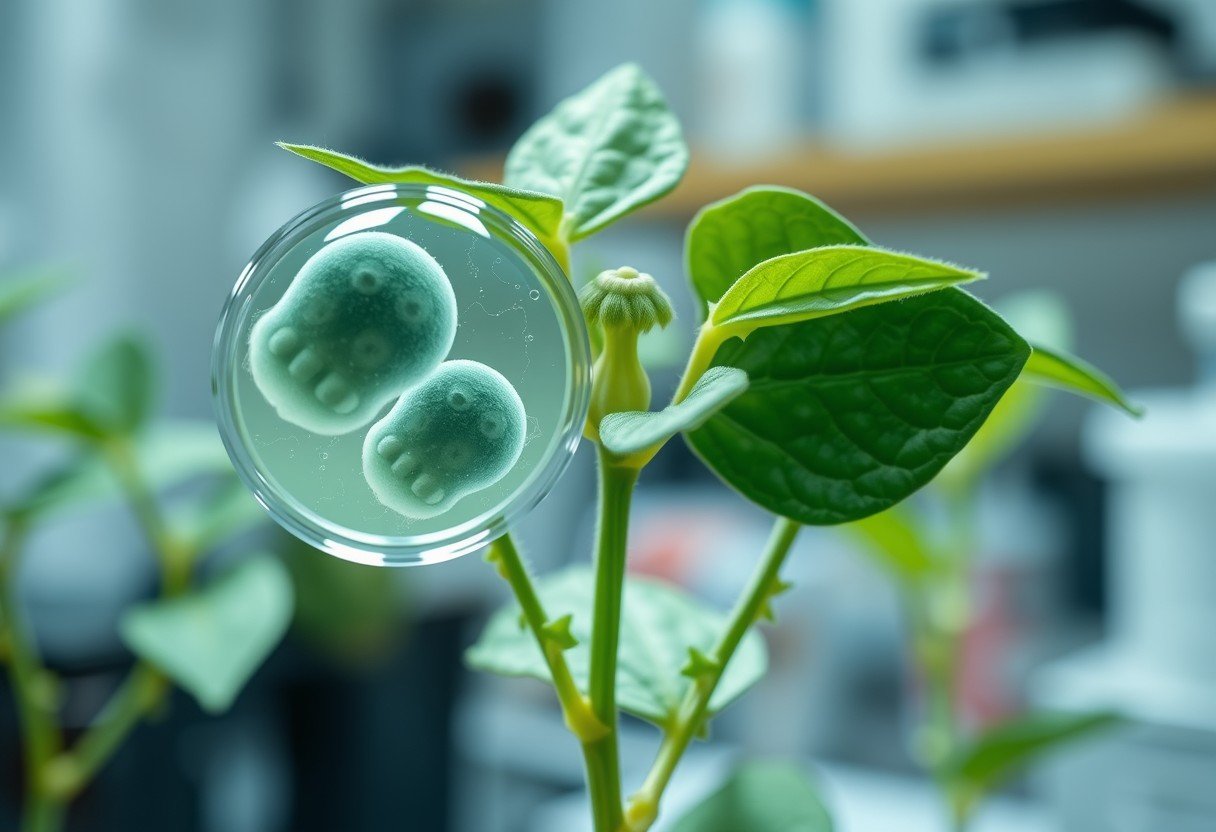Have you ever wondered why you can’t see individual chromosomes with a regular light microscope when a cell isn’t dividing? It’s because during this phase, called interphase, your genetic material exists as a long, thin, and tangled structure known as chromatin. This relaxed form is essential for the cell to function, but it makes the chromosomes too jumbled and indistinct to be seen clearly, unlike the tightly packed structures they form during cell division.
What are Chromosomes Doing During Interphase
During interphase, which is the longest part of the cell cycle, chromosomes don’t look like the X-shapes you often see in textbooks. Instead, they are decondensed and spread out within the nucleus in a form called chromatin.
This structure consists of DNA wound around proteins called histones, resembling beads on a string. This organization keeps the DNA from becoming a tangled mess while still allowing the cell to access specific genes to produce proteins and carry out its normal functions. Think of it like a library where the books (genes) are on the shelves and accessible, rather than packed away in moving boxes.
This unpacked state of chromatin is crucial for processes like DNA replication and transcription to occur. The cell needs to read its genetic blueprint, and it can’t do that if the DNA is tightly coiled into compact chromosomes.
The Big Difference Between Interphase and Mitosis
The visibility of chromosomes is all about timing and the cell’s current activity. The cell cycle is divided into two main parts: interphase and the mitotic (M) phase. Interphase is the preparation stage, while the M phase is when the cell actually divides.
During interphase, the cell is growing and copying its DNA. In stark contrast, during mitosis, the cell’s only job is to divide its genetic material equally between two new daughter cells. To do this safely, the long chromatin fibers must undergo a massive condensation process.
This coiling and packing transforms the chromatin into the dense, distinct chromosomes that are easily visible under a light microscope. It is this dramatic change in structure that makes chromosomes visible during cell division but virtually invisible during interphase.
Why a Light Microscope Falls Short
Your standard light microscope, while powerful, has fundamental limitations that prevent it from resolving the fine details of chromatin during interphase. The main issue is resolution, which is the ability to distinguish between two closely spaced objects.
A light microscope’s resolution is limited by the wavelength of visible light, typically to about 200 nanometers. The individual chromatin fibers are much thinner than this, making it impossible to see them as separate strands. Instead, you see a grainy, indistinct mass within the nucleus.
Several factors contribute to this challenge:
- Resolution Limit: The thinness of chromatin fibers is below the resolving power of visible light.
- Lack of Contrast: Chromatin has a similar refractive index to the surrounding substance in the nucleus (nucleoplasm), so it doesn’t stand out.
- Overlapping Fibers: The chromatin is a three-dimensional network of fibers, meaning they overlap and obscure one another from view.
These optical challenges mean that even if you could see a single fiber, it would be lost in the jumble of all the others within the nucleus.
Staining Techniques and Their Limitations
Scientists use stains to add color and contrast to cellular structures, making them easier to see. Stains like Giemsa or DAPI are excellent for visualizing the condensed chromosomes present during mitosis, as they bind to DNA and make the compact structures stand out brightly.
However, when these stains are applied to a cell in interphase, the result is often less helpful. Because the chromatin is so spread out, the stain colors the entire nucleus. While this confirms the presence of DNA, it doesn’t allow you to distinguish one chromosome from another.
Staining interphase chromatin is like trying to identify individual threads in a ball of yarn by dipping the whole thing in dye. You get a colored ball, but you can’t trace a single thread from beginning to end.
How Modern Technology Helps Us See the Unseen
While traditional light microscopy struggles, modern advanced imaging techniques have revolutionized our ability to study chromosomes during interphase. These methods overcome the limitations of resolution and contrast, giving scientists an unprecedented look inside the nucleus.
Techniques like fluorescence microscopy allow researchers to attach fluorescent tags to specific DNA sequences. This makes it possible to light up and track the location of a single gene or an entire chromosome territory within the nucleus of a living cell.
Other powerful methods provide even greater detail, pushing the boundaries of what we can see.
| Technique | Description |
| High-Resolution Microscopy | Provides detailed images of chromatin structure and organization. |
| Live Cell Imaging | Allows scientists to track the dynamic movements of chromosomes in real-time. |
| Super-resolution Microscopy | Breaks the conventional 200-nanometer resolution limit to visualize fine molecular details. |
By integrating these advanced tools, researchers can now study how the organization of chromatin affects gene expression and contributes to health and disease, even during the elusive interphase stage.
Frequently Asked Questions about Chromosome Visibility
Why do chromosomes need to be uncoiled during interphase?
Chromosomes are uncoiled into chromatin during interphase so the cell’s machinery can access the DNA. This is necessary for reading genes to make proteins (transcription) and for copying the entire genome before cell division (replication).
What is the main difference between chromatin and a chromosome?
Chromatin is the long, thin, and uncondensed form of DNA found during interphase. A chromosome is the tightly packed, condensed structure that chromatin forms during cell division, making it visible and easy to separate.
Can you ever see chromosomes during interphase with any microscope?
With a standard light microscope, you cannot see individual chromosomes. However, with advanced methods like super-resolution or electron microscopy, scientists can visualize the structure and organization of chromatin fibers within the nucleus.
How does fluorescence microscopy work to see chromatin?
Fluorescence microscopy uses special dyes or tagged proteins that attach to specific DNA sequences. When a specific wavelength of light hits these tags, they glow, allowing researchers to see the location of certain parts of a chromosome even when it’s uncoiled.
Is interphase chromatin just a random mess of DNA?
No, it is highly organized. While it may look jumbled, chromosomes occupy specific territories within the nucleus. This organization is crucial for regulating gene activity and ensuring the cell functions correctly.









Leave a Comment